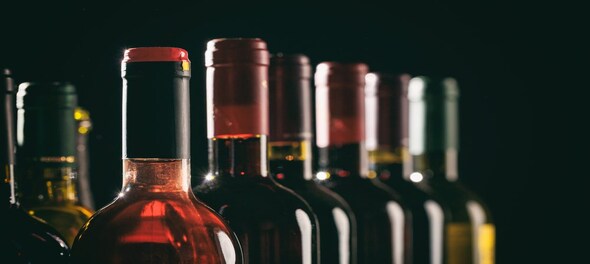
As the severity of the COVID-19 pandemic eases, thanks to the vaccine rollout, a revival of growth in the alcoholic beverage (alcobev) sector is expected with production largely back on track, and the distribution network normalising, says a report by AnandRathi, a financial services company.
Also, as per the report, as the intensity of the pandemic eases, overall mobility would further improve, thereby increasing consumption of alcobevs.
After a challenging operating environment of the last three-four years, the industry context for the alcobev sector is turning favourable, aided by supply-chain normalisation, stable to soft input costs and likely less irrational taxation, says the report
AnandRathi is expecting normal operations in 2022-23 fiscal. “With the greater revenue assurance, we expect valuations to be buoyant. Besides, receding regulatory risks (likelihood of a relatively rational taxation regime), we believe, should result in a healthy recovery in volume growth in FY22 and FY23.”
According to the report, alcobev volumes have progressively recovered especially in key markets — Karnataka, Uttar Pradesh, Maharashtra, Kerala, and Tamil Nadu — on normalised supply chain post-COVID-19 restrictions. Regulatory risks have been receding with the partial or full rollbacks of the Covid-19 cess and favourable excise-policy recommendations in select states.
AnandRathi expects volume CAGRs of 12-13 per cent over 2021-23 fiscal for alcobev players.
Volume recovery, easier input costs to boost margins
AnandRathi also expects the operating margins to improve and return to mid-teen levels for alcobevs, aided by softer costs (stable ENA prices, moderate barley prices), recovery in premium products, and operating leverage.
Competition unlikely to be less intense
Competition in the P&A spirits category is intensifying with Pernod Ricard, India, firming up brand spends and mid-size manufacturers expanding their range. In beer, with softer input costs, competition could hot up. United Breweries, however, in terms of scale and balance-sheet strength, is better set to tackle the competition.
Macro-economic tailwinds point to growth potential
In terms of macro-economic drivers, opportunities for growth appear healthy for the alcobev segment in India. The market here has sufficient drivers: a young demographic (median age: 28 years), an increasing number of people entering legal drinking age (15m/year), low per-capita consumption and premiumisation potential on the shift from illicit liquor to branded alcobevs. Further, per-capita consumption of beer/India-made Foreign Liquor (IMFL) in India is lower than in emerging and developed markets.
Out-of-home consumption gradually recovering
The COVID-19 outbreak had severely struck the alcobev sector, completely halting supply chains, as it is non-essential commodity. The opening up of its distribution channels was slower than those of staples and other discretionary products. However, with the phased unlocking of the economy, restrictions on manufacturing and distribution eased for this segment, and by October 2021, most off-premises channels were open and hotels, restaurants and bars were allowed to function with certain restrictions.
This resulted in progressive recovery in volumes of alcobev players sequentially.
The Out-of-home (OOH) consumption was considerably affected in the first six months of 2021 fiscal. Also, restrictions on number of guests at weddings and lack of corporate conferences further hurt the overall outdoor consumption of alcobevs. However, bars and restaurants were allowed to reopen gradually from around October 2021, though at 50 per cent capacity and with other social-distancing norms.
According to the report, 85-90 per cent of the on-premises channel is now operational.
The pace of recovery of IMFL manufacturers, however, has been better than that of beer manufacturers as the cold beverage is bulkier and less preferred during the pandemic.
Sales volumes of alcoholic-spirit manufacturers are back to pre-COVID levels, and AnandRathi expects United Breweries’ sales volumes to hit pre-COVID levels by the end of March 2021.
The Indian beer category is tightly consolidated. The top three enjoy a commanding 90 per cent of the domestic beer market. United Breweries dominates with a 51 per cent market share, while Carlsberg and ABinBev (including SAB Miller) take 18-20 per cent each of the market.
(Edited by : Abhishek Jha)
Check out our in-depth Market Coverage, Business News & get real-time Stock Market Updates on CNBC-TV18. Also, Watch our channels CNBC-TV18, CNBC Awaaz and CNBC Bajar Live on-the-go!


BJP is planning to ban RSS, says Shiv Sena (UBT) chief Uddhav Thackeray
May 18, 2024 8:01 PM
Punjab Lok Sabha elections: Complete list of Congress candidates
May 18, 2024 4:08 PM
Punjab Lok Sabha elections: Check full list of AAP candidates and constituencies
May 18, 2024 12:59 PM
PM Modi, Rahul Gandhi election rallies in Delhi today: Here are the routes to avoid
May 18, 2024 11:28 AM

